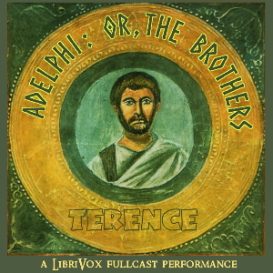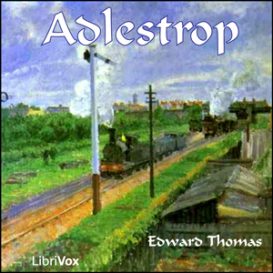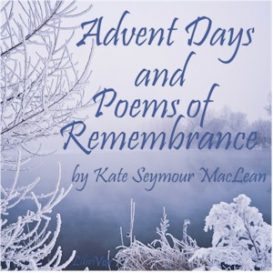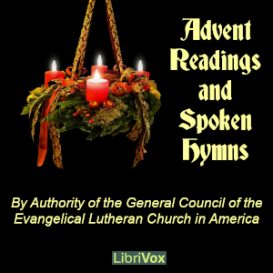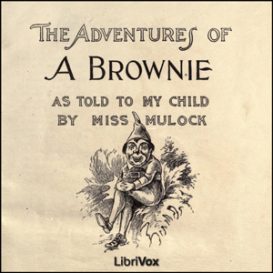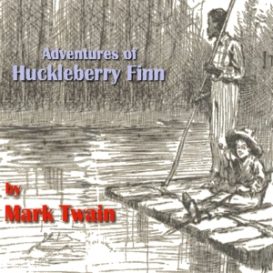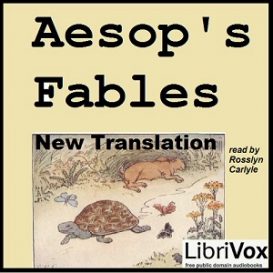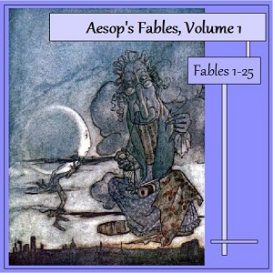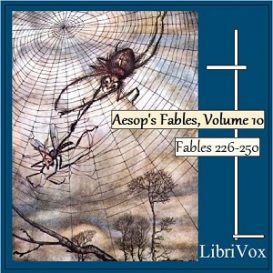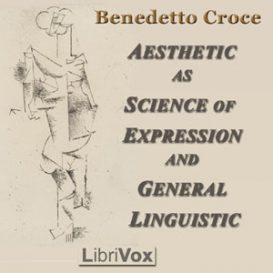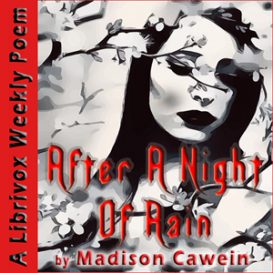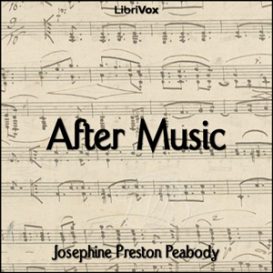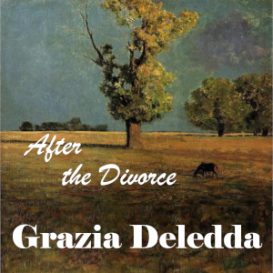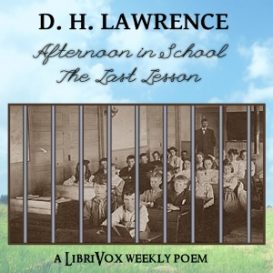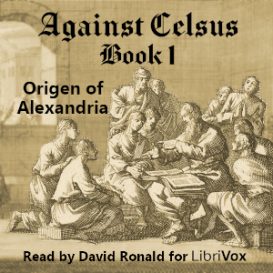Audio Books
Showing 151–200 of 2033 results
Adeline Mowbray
Everybody makes mistakes, and everything has a price. This novel describes, according to its name, the life of Adeline Mowbray, full of everything: sorrow, happiness, falsehood, truth, kindness, and mistakes. This novel is an exploration of the human heart. Be prepared for a strong and enjoyable read. (Summary by Stav Nisser)
Adelphi: or, The Brothers
“Micio and Demea are two brothers of dissimilar tempers. Demea is married, and lives a country life, while his brother remains single, and resides in Athens.” Things quickly get a bit messy with hushed-up debauchery, kidnapping/elopement/theft of a slave, general carousing, and marriage nuptials – the usual for the day perhaps, except that: “The Play concludes with a serious warning from Demea, who advises his relatives not to squander their means in riotous living; but, on the contrary, to bear admonition and to submit to restraint in a spirit of moderation and thankfulness.” – Summary by The Translator Cast list: Demea, Brother, aged Athenian: Max K?rlinge Micio, Brother, aged Athenian: Adam Bielka Hegio, an aged Athenian, kinsman of Sostrata: Ethan Hurst ?schinus, son of Demea, adopted by Micio: Tomas Peter Ctesipho, another son of Demea: Shashank Jakhmola Sannio, a Procurer: Son of the Exiles Geta, servant of Sostrata: ToddHW Parmeno, servant of Micio: Devorah Allen Syrus, servant of Micio: alanmapstone Dromo, servant of Micio: Devorah Allen Pamphila, a young woman beloved by ?schinus: Lydia Sostrata, a widow, mother of Pamphila: KHand Canthara, a Nurse: Eva Davis Stage Directions: Sonia Edited: ToddHW
Adlestrop
LibriVox volunteers bring you 7 recordings of Adlestrop by Edward Thomas. This was the Weekly Poetry project for September 20th, 2009.
Adrienne Lecouvreur
This drama was written in 1848 for the great French tragedienne, Rachel, by Eugene Scribe and his writing partner, Ernest Legouve. Scribe is remembered for devising the compositional technique now known as the ?well-made play? that dominated play-writing for most of the 19th century. This plot is loosely based on events in the life of the actress, Adrienne Lecouvreur of the Com?die-Fran?aise and the tragic outcome of her love affair with Maurice, Comte de Saxe (Summary by Kelly Taylor) Cast List Maurice de Saxe Andrew Latheron Prince de Bouillon Jake Malizia Abbe de Chazeuil Alan Mapstone Michonnet Adrian Stephens Poisson Greg Giordano Quinault James R. Hedrick Servant David Purdy Call-boy Jim Locke Princess de Bouillon Wendy Katz Hiller Duchess d?Aumont Matea Bracic Marquise de Sancerre Michele Eaton Countess de Beauveau Lynette Caulkins Adrienne Lecouvreur Kelly S. Taylor Mdlle. Jouvenot Joanna Michal Hoyt Mdlle. Dangeville Rebecca Brown Suzanne, the maid Jenn Broda Stage Directions Tchaikovsky
Adrift in New York
John Linden is a very wealthy man. The people who should inherit his property are his nephew, Curtis Waring, his niece Florence Linden, and his long lost son – if alive. John thinks it would be best if Florence and Curtis were married, and makes it a requirement if Florence wishes to have any of the property. A boy named Dodger was sent to steal one of the wills of John Linden so that Curtis would inherit all the property. But Florence prevents Dodger from stealing, and they become friends? To the shock of her uncle and cousin, she decides to leave her uncle’s house with Dodger instead of marrying Curtis. And what then? Would she be able to get used to being poor? And will she be poor for ever? Adrift in New York? (Summary by Stav Nisser)
Adrift on an Ice-Pan
This autobiographical work describes the author’s harrowing experience caught on a small drifting piece of ice, while crossing a frozen bay by dog team on the Northern Peninsula of Newfoundland. (Summary by Sean Michael Hogan)
Advent Days and Poems of Remembrance
This is a very short volume of poems by Canadian poet Kate Seymour MacLean, containing only twenty poems. – Summary by Carolin
Advent readings and spoken hymns
Advent readings and spoken hymns for each of the Four Sundays of the Advent Season. (Summary by KevinS)
Adventures of a Brownie as Told to my Child
Adventures of a Brownie follows the life of a brownie who lives in a family’s coal cellar and the adventures he gets into with the members of the household. Written by Ancilla
Adventures of Bindle
Jenkins’ most popular fictional creation was Mr. Joseph Bindle, who first appeared in a humorous novel in 1916 and in a number of sequels. In the preface to the books, T. P. O’Connor said that “Bindle is the greatest Cockney that has come into being through the medium of literature since Dickens wrote Pickwick Papers”. The stories are based on the comedic drama of life at work, at home and all the adventures that take place along the way. (Summary by Wikipedia)
Adventures of Huckleberry Finn
Adventures of Huckleberry Finn (1884) by Mark Twain is one of the truly great American novels, beloved by children, adults, and literary critics alike. The book tells the story of ?Huck? Finn (first introduced as Tom Sawyer?s sidekick in The Adventures of Tom Sawyer), his friend Jim, and their journey down the Mississippi River on a raft. Both are on the run, Huck from his drunk and abusive father, and Jim as a runaway slave. As Huck and Jim drift down the river, they meet many colorful characters and have many great adventures. The true heart of the story, however, is the friendship between Huck and Jim. A constant theme throughout the book is Huck?s internal struggle between what he has been taught, that helping a runaway slave is a sin, and what he truly believes, that Jim is a good man and it couldn?t possibly be wrong to help him. Adventures of Huckleberry Finn was unique at the time of its publication (1884) because it is narrated by Huck himself and is written in the numerous dialects common in the area and time in which the book is set. Although the book was originally intended as a sequel to the children?s book The Adventures of Tom Sawyer, as Twain wrote Adventures of Huckleberry Finn it progressed into a more serious work. Twain?s views on slavery and other social issues of the time become clear through the words, thoughts, and actions of Huck Finn. The book has always been the subject of great controversy, and according to The American Library Association it was fifth on the list of most frequently challenged books in the 1990s. (Summary by Annie Coleman)
Adventures of Huckleberry Finn (version 2)
In The Adventures of Huckleberry Finn, Mark Twain creates an entertaining adventure of Middle America in the 1800’s – afloat on a raft on the Mississippi River. Huck escapes his civilized life when he arranges his own “murder” and turns back into the backwoods, downriver yokel he started as, and in the process springing a slave, Jim, from bondage. Huck and Jim experience life as a series of tableaux as the river sweeps them through small towns on their way South. At each stop, Huck engages his talent for mixing fact with bald-faced lies to endlessly get himself out of situations… and of course, putting him into others! Much has been written about the statement Twain is making about slavery in this book, but it’s really secondary to the story. The facts of how black people were treated in this period give Huck and Jim their license for life on the run. Modern listeners will be intrigued by the unencumbered life of the pair; they make do with coffee, fish from the river, and little else (but of course, when they do need something extra, they don’t mind helping themselves to it without recourse to money!) Huck and Jim have run-ins with desperadoes and family feuds and even manage to get run down by a steamboat. The adventures ratchet up when they are joined on the raft by a self-proclaimed “duke” and a “king” – shysters both, who spend their time in figuring how to fleece the public in the little river towns. And when Jim is captured and threatened with being sent back into slavery, Huck enlists his old buddy Tom Sawyer in a frenzied, desperate, and terribly funny rescue. I had to clip a lot of laughing from this recording at Twain’s sly, catch-’em-when-they’re-not-looking humor, but you can feel free to enjoy some good belly laughs at this crew of lovable rapscallions! (Summary by Mark)
Adventures of Huckleberry Finn (version 3)
The book is noted for its colorful description of people and places along the Mississippi River, and its sober and often scathing look at entrenched attitudes, particularly racism. The drifting journey of Huck and his friend Jim, a runaway slave, down the Mississippi River on their raft may be one of the most enduring images of escape and freedom in all of American literature. The book has been popular with young readers since its publication, and taken as a sequel to the comparatively innocuous The Adventures of Tom Sawyer. It has also been the continued object of study by serious literary critics. Although the Southern society it satirized was already a quarter-century in the past by the time of publication, the book immediately became controversial, and has remained so to this day.(Summary from Wikipedia)
Adventures of Huckleberry Finn (version 4)
Adventures of Huckleberry Finn (Tom Sawyer’s Comrade), often shortened to Huck Finn, is a novel written by Mark Twain and published in 1884. It is commonly regarded as one of the Great American Novels, and is one of the first major American novels written in the vernacular, characterized by local color regionalism. It is told in the first person by Huckleberry “Huck” Finn, best friend of Tom Sawyer and narrator of two other Twain novels. The book is noted for its colorful description of people and places along the Mississippi River. By satirizing a Southern antebellum society that was already anachronistic at the time, the book is an often scathing look at entrenched attitudes, particularly racism. The drifting journey of Huck and his friend Jim, a runaway slave, down the Mississippi River on their raft may be one of the most enduring images of escape and freedom in all of American literature. The book has been popular with young readers since its publication and is taken as a sequel to The Adventures of Tom Sawyer. It has also been the continued object of study by serious literary critics. The book was criticized upon release because of its coarse language, and became even more controversial in the 20th century because of its perceived use of racial stereotypes and because of its frequent use of the “N” racial slur. (Summary by Wikipedia)
Adventures of Huckleberry Finn (version 7)
A slightly more complex sequel to Mark Twain’s original book, The Adventures of Tom Sawyer, this book really shows the true side of racism in quite a different light. A brilliant masterpiece, The Adventures of Huckleberry Finn follows its protagonist, Huck Finn, as he travels down the Mississippi River and learns some very important things- and even learns to see his adoptive parent’s servant in a different light. ( JayKitty76 )
Adventures Of The Infallible Godahl
Frederick Irving Anderson was a New York newspaperman who had a second career writing mystery stories for the “slick” magazines such as the Saturday Evening Post. The Infallible Godahl is a collection of some of his first stories. Godahl is a clever gentleman thief, who might be thought of as an American version of Raffles or Arsene Lupin. – Summary by Winston Tharp
Adventures of the Teenie Weenies
The Teenie Weenies are people two inches tall who live under a rose bush with “real world” size materials made from discarded objects like hats, jars, barrels, kegs, and boxes – all of which were gigantic to them. Each Teenie Weenie has a unique personality that both names them and defines how they interact with the world and each other. The General is in charge and runs the tiny village, the Cook of course is in charge of food, the Fireman, the Policeman, The Turk, the Indian, The Cowboy, the Chinese Man, Grandma, Grandpa, The Lady of Fashion and many many more have many adventures. These stories are not long and if popular I might post more Teenie Weenie books. – Summary by Phil Chenevert
Aedh Wishes for the Cloths of Heaven
LibriVox volunteers bring you nine different recordings of Aedh Wishes for the Cloths of Heaven, by William Butler Yeats. This was the weekly poetry project for the week of December 10th, 2006.
Aequanimitas and Other Addresses
This book is a compilation of twenty-two addresses given by Sir William Osler in various settings. He spoke on the philosophical and moral foundations of medical science, giving instruction to the student the teacher, the physician and the nurse. In his own eloquent words, “we are here not to get all we can out of life for ourselves, but to try to make the lives of others happier… The practice of medicine is an art, not a trade; a calling, not a business; a calling in which your heart will be exercised equally with your head. Often the best part of your work will have nothing to do with potions and powders, but with the exercise of and influence of the strong upon the weak, of the righteous upon the wicked, of the wise upon the foolish.” – Summary by Luke Sartor
Aeroplanes and Dirigibles of War
“Aeroplanes and Dirigibles of War” is an interesting read of the beginnings of air warfare in World War I. Anyone interested in early aviation and armament will find this a fascinating work. By William Tomcho.
Aesop’s Fables – new translation
284 fables on a wide range of subjects, written by the famous author Aesop.
Aesop’s Fables, Volume 01 (Fables 1-25)
Dating back to the 6th century BC, Aesop’s Fables tell universal truths through the use of simple allegories that are easily understood. Though almost nothing is known of Aesop himself, and some scholars question whether he existed at all, these stories stand as timeless classics known in almost every culture in the world. This is volume 1 of 12. (Summary by Chip)
Aesop’s Fables, Volume 02 (Fables 26-50)
Dating back to the 6th century BC, Aesop’s Fables tell universal truths through the use of simple allegories that are easily understood. Though almost nothing is known of Aesop himself, and some scholars question whether he existed at all, these stories stand as timeless classics known in almost every culture in the world. This is volume 2 of 12. (Summary by ChipDoc)
Aesop’s Fables, Volume 03 (Fables 51-75)
Dating back to the 6th century BC, Aesop’s Fables tell universal truths through the use of simple allegories that are easily understood. Though almost nothing is known of Aesop himself, and some scholars question whether he existed at all, these stories stand as timeless classics known in almost every culture in the world. This is volume 3 of 12. (Summary by Chip)
Aesop’s Fables, Volume 04 (Fables 76-100)
Dating back to the 6th century BC, Aesop’s Fables tell universal truths through the use of simple allegories that are easily understood. Though almost nothing is known of Aesop himself, and some scholars question whether he existed at all, these stories stand as timeless classics known in almost every culture in the world. This is volume 4 of 12. (Summary by Chip)
Aesop’s Fables, Volume 05 (Fables 101-125)
Dating back to the 6th century BC, Aesop’s Fables tell universal truths through the use of simple allegories that are easily understood. Though almost nothing is known of Aesop himself, and some scholars question whether he existed at all, these stories stand as timeless classics known in almost every culture in the world. This is volume 5 of 12. (Summary by Chip)
Aesop’s Fables, Volume 06 (Fables 126-150)
Dating back to the 6th century BC, Aesop’s Fables tell universal truths through the use of simple allegories that are easily understood. Though almost nothing is known of Aesop himself, and some scholars question whether he existed at all, these stories stand as timeless classics known in almost every culture in the world. This is volume 6 of 12. (Summary by Chip)
Aesop’s Fables, Volume 07 (Fables 151-175)
Dating back to the 6th century BC, Aesop’s Fables tell universal truths through the use of simple allegories that are easily understood. Though almost nothing is known of Aesop himself, and some scholars question whether he existed at all, these stories stand as timeless classics known in almost every culture in the world. This is volume 7 of 12. (Summary by Chip)
Aesop’s Fables, Volume 08 (Fables 176-200)
Dating back to the 6th century BC, Aesop’s Fables tell universal truths through the use of simple allegories that are easily understood. Though almost nothing is known of Aesop himself, and some scholars question whether he existed at all, these stories stand as timeless classics known in almost every culture in the world. This is volume 8 of 12. (Summary by Chip)
Aesop’s Fables, Volume 09 (Fables 201-225)
Dating back to the 6th century BC, Aesop’s Fables tell universal truths through the use of simple allegories that are easily understood. Though almost nothing is known of Aesop himself, and some scholars question whether he existed at all, these stories stand as timeless classics known in almost every culture in the world. This is volume 9 of 12. (Summary by Chip)
Aesop’s Fables, Volume 10 (Fables 226-250)
Dating back to the 6th century BC, Aesop’s Fables tell universal truths through the use of simple allegories that are easily understood. Though almost nothing is known of Aesop himself, and some scholars question whether he existed at all, these stories stand as timeless classics known in almost every culture in the world. This is volume 10 of 12. (Summary by Chip)
Aesop’s Fables, Volume 11 (Fables 251-275)
Dating back to the 6th century BC, Aesop’s Fables tell universal truths through the use of simple allegories that are easily understood. Though almost nothing is known of Aesop himself, and some scholars question whether he existed at all, these stories stand as timeless classics known in almost every culture in the world. This is volume 11 of 12. (Summary by Chip)
Aesop’s Fables, Volume 12 (Fables 276-284)
Dating back to the 6th century BC, Aesop’s Fables tell universal truths through the use of simple allegories that are easily understood. Though almost nothing is known of Aesop himself, and some scholars question whether he existed at all, these stories stand as timeless classics known in almost every culture in the world. This is volume 12 of 12. (Summary by Chip)
Aesop’s Fables: A New Revised Edition
Remember the story of the Ant and the Grasshopper? the Fox and the Sour Grapes? The Boy who Cried Wolf? These wonderful tales and hundreds more have been passed down to us over the centuries. The man credited with writing them, Aesop, was an Ancient Greek slave born about 620 B.C. Aesop is known as a fabulist or story teller credited with a number of fables shining glaringly true light on our human foibles now collectively known as Aesop’s Fables. Although no writings by him survive, numerous tales credited to him were gathered across the centuries and in many languages in a storytelling tradition that continues to this day. Many of the tales are characterized by animals and inanimate objects that speak, solve problems, and generally have human characteristics. Scattered details of Aesop’s life can be found in ancient sources, including Aristotle, Herodotus, and Plutarch. An ancient literary work called The Aesop Romance tells an episodic, probably highly fictional version of his life, including the traditional description of him as a strikingly ugly slave who by his cleverness acquires freedom and becomes an adviser to kings and city-states. A later tradition depicts Aesop as a black Ethiopian. But whatever his history, the fables depict truths about human behavior, our strengths and weakness that have remained true for 2500 years. (Summary from Wikipedia and Phil Chenevert)
Aesthetic as Science of Expression and General Linguistic
One of the earliest works of this Italian philosopher and literary critic, Aesthetic as Science of Expression and General Linguistic marks the beginning of Croce’s elaboration of his highly influential ideas of aesthetics. Croce defines art in terms of intuition and expression, thus replacing beauty as the primary criterion for aesthetic evaluation. – Summary by Mary J
Afloat on the Ohio
Afloat on the Ohio, An Historical Pilgrimage, of a Thousand Miles in a Skiff, From Redstone to Cairo. There were four of us pilgrims?my Wife, our Boy of ten and a half years, the Doctor, and I. My object in going?the others went for the outing?was to gather “local color” for work in Western history. The Ohio River was an important factor in the development of the West. I wished to know the great waterway intimately in its various phases,?to see with my own eyes what the borderers saw; in imagination, to redress the pioneer stage, and repeople it. ( From the Preface )
African-American Collection
This collection recognizes Black History Month, February 2007. Two excellent resources for public domain African American writing are African American Writers (Bookshelf) and The Book of American Negro Poetry, edited by James Weldon Johnson. Johnson’s collection inspired the Harlem Renaissance generation to establish a firm African-American literary tradition in the United States. (Summary by Alan)
After A Night Of Rain
LibriVox volunteers bring you 15 recordings of After A Night Of Rain by Madison Cawein. This was the Weekly Poetry project for September 1, 2019. —— An ode to September and the changing season. – Summary by David Lawrence
After Dark
William Kerby is in danger of losing his sight, which would hit him especially hard as he is a painter. Only rest can preserve it, but a man must eat, and so he and his wife Leah look for other ways to generate a small income. Having travelled a good deal and having heard all kinds of stories on those journeys, William dictates six short stories to his wife, hoping that publishing a book might tide them over.. – Summary by Carolin
After London, or Wild England
Jefferies’ novel can be seen as an early example of “post-apocalyptic fiction.” After some sudden and unspecified catastrophe has depopulated England, the countryside reverts to nature, and the few survivors to a quasi-medieval way of life. The first part of the book, “The Relapse into Barbarism”, is the account by some later historian of the fall of civilisation and its consequences, with a loving description of nature reclaiming England. The second part, “Wild England”, is an adventure set many years later in the wild landscape and society. The book is not without its flaws (notably the abrupt and unsatisfying ending) but is redeemed by the quality of the writing, particularly the unnervingly prophetic descriptions of the post-apocalyptic city and countryside. (Summary by Ruth Golding and Wikipedia)
After Long Grief
LibriVox volunteers bring you 20 recordings of After Long Grief by Madison Cawein. This was the Weekly Poetry project for July 22, 2012. Madison Cawein was a poet from Louisville, Kentucky. His father made patent medicines from herbs. Cawein thus became acquainted with and developed a love for local nature as a child. His output was thirty-six books and 1,500 poems. His writing presented Kentucky scenes in a language echoing Percy Bysshe Shelley and John Keats. He soon earned the nickname the “Keats of Kentucky”. (Summary from Wikipedia)
After Many Years
LibriVox volunteers bring you 18 recordings of After Many Years by Henry Kendall. This was the Fortnightly Poetry project for April 19, 2020. —— Henry Kendall was the first Australian poet to draw his inspiration from the life, scenery and traditions of the country., from the Biographical Note by Bertram Stevens (The Poems of Henry Kendall)
After Music
LibriVox volunteers bring you 17 recordings of After Music by Josephine Preston Peabody. This was the Weekly Poetry project for April 10, 2011. Josephine Preston Peabody was an American poet and dramatist. She was born in New York and educated at the Girls’ Latin School, Boston, and at Radcliffe College. (summary from Wikipedia) After Music is taken from An American Anthology, 1787?1900, edited by Edmund Clarence Stedman (1833?1908)
After the Divorce
Giovanna and Costantino Ledda are a happily married couple living with their young child in a Sardinian country village close to their extended family. Costantino is wrongly convicted of murdering his wicked uncle and with no way of supporting herself, Giovanna reluctantly divorces him and is driven to marry Brontu Dejas, a wealthy but brutish drunkard who has always lusted after her. As well as enduring a marriage amounting to slavery, Giovanna is derided by villagers for having two husbands. When Constantino is freed after the real murderer confesses to his crime, he and Giovanna are together again, but this time their relationship is outside the law, and sets both on a path of destruction, at the mercy of religious and social forces they cannot control. The author, Grazia Deledda, won the Nobel Prize for Literature in 1926, for writings which show passion and sympathy for the people of her native Sardinia, and ?After the Divorce? (Dopo il Divorzio) is one of her finest works. – Summary by Tom Denholm
After-Glow
LibriVox volunteers bring you 7 recordings of After-Glow by Susan Coolidge (Sarah Chauncey Woolsey). This was the Fortnightly Poetry project for July 25, 2021. —— Sarah Chauncey Woolsey (January 29, 1835 ? April 9, 1905) was an American children’s author who wrote under the pen name Susan Coolidge. Woolsey worked as a nurse during the American Civil War (1861?1865), after which she started to write. She is best known for her classic children’s novel What Katy Did (1872) (Summary by Wikipedia)
Afternoon
This is a volume of poetry by Belgian poet ?mile Verhaeren, skillfully rendered into English verse by Charles Murphy. Although the English translation was published during World War I, the French original was published in 1905, and the topic of the poems is Verhaeren’s love for his wife Marthe. – Summary by Carolin
Afternoon in School – the last lesson
David Herbert Lawrence was an English novelist, poet, playwright, essayist, literary critic and painter. His collected works represent, among other things, an extended reflection upon the dehumanising effects of modernity and industrialisation. Some of the issues Lawrence explores are sexuality, emotional health, vitality, spontaneity, and instinct. – Summary by Wikipedia
Afternoon Songs
This is a volume of poems by Julia Caroline Dorr, part 5 of her collected poems. – Summary by Carolin
Afterward
Mary and Ned Boyne have fled their dreary life in Wisconsin for a home in rustic Dorsetshire. But you can only run so far, and some things – some secret things – may follow you. A creepy and tragic ghost story from one of the masters. (Summary by John Silence)
Against Celsus Book 1
Against Celsus, preserved entirely in Greek, is a major apologetics work by the Church Father Origen of Alexandria, written in around 248 AD, countering the writings of Celsus, a pagan philosopher and controversialist who had written a scathing attack on Christianity in his treatise “The True Word”. Among a variety of other charges, Celsus had denounced many Christian doctrines as irrational and criticized Christians themselves as uneducated, deluded, unpatriotic, close-minded towards reason, and too accepting of sinners. He had accused Jesus of performing his miracles using black magic rather than actual divine powers and of plagiarizing his teachings from Plato. Celsus had warned that Christianity itself was drawing people away from traditional religion and claimed that its growth would lead to a collapse of traditional, conservative values. Summary by Wikipedia



